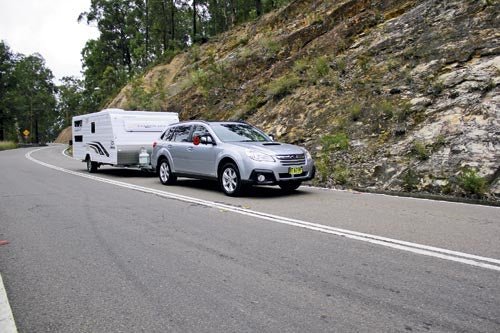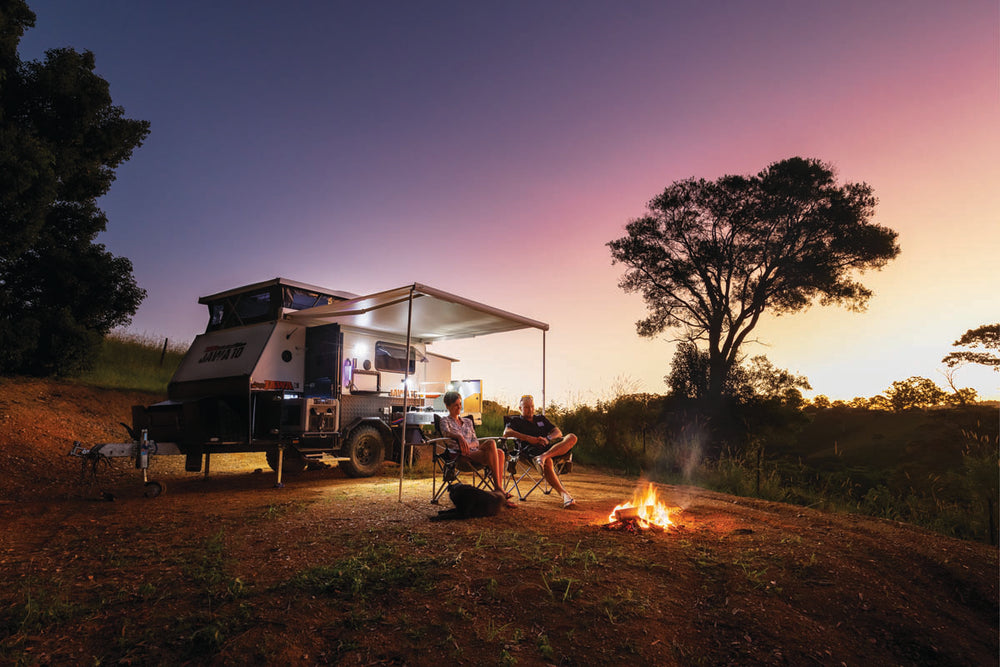SUBARU OUTBACK 2.0D PREMIUM CVT REVIEW

Subaru has been selling its Outback diesel for a couple of years now but, early this year, the diesel-fed Outback was, for the first time, made available with a self-shifting transmission.
The diesel version of the Subaru boxer engine was developed primarily to boost sales in Europe, where Subaru’s lack of market share was partly because it didn’t offer a vehicle to appeal to the large diesel market there. As European buyers don’t care for automatic diesels, Subaru only developed a manual version. Of course, in other markets such as Australia, automatic transmission is the preference in this class of vehicle, so finally Subaru has such a transmission on offer here with its diesel engine.
ATTRIBUTES
We tested the Premium version of the Outback 2.0D, which comes with leather interior, power driver’s seat, sat nav, sunroof, dual-zone climate control, Bluetooth, reversing camera, rain-sensing wipers, auto-on headlights, fog lights, roof rails, 17in alloy wheels and a full-size spare wheel.
With the introduction of the automatic diesel to the 2013 line-up have come other cosmetic revisions across the Outback range. These include minor updates to grille, front bumper, foglight surrounds and wheel design.
Body changes to the Continuously Variable Transmission (CVT) model include added reinforcement to the bulkhead floor, to ensure sufficient strength in a front-on collision.
Subaru has also added more soundproofing to the lower engine cover, to lower cabin noise when idling or accelerating. More soundproofing has also been fitted to the upper front guards and the toe board.
The Outback 2.0D Premium costs $42,990, with the CVT transmission adding $2500, making for a $45,490 total for the 2.0D CVT Premium before options and on-road costs.
The Outback interior is a modern and comfortable place to sit, and overall the interior conveys a sense of quality. Some of the lower dash plastics seem a bit low-rent and some of the controls are difficult to see, but the main instruments are clear and legible. The Outback is easy to see out of to the front and sides, with rear quarter and rear view obscured by thick roof pillars. The seats offer plenty of adjustment up front and are comfortable and supportive. The rear seat appears quite flat at first glance, but this suits the fitment of child seats or boosters. The only annoying thing is that the centre lap-sash seatbelt top tether is mounted up in the ceiling of the cargo area.
ENGINE AND TRANSMISSION
The Outback 2.0D CVT is fitted with a horizontally-opposed boxer turbocharged 2.0L four-cylinder diesel engine, producing 110kW of power at 3600rpm and 350Nm of torque between 1800-2400rpm.
There have been numerous changes to the Outback to accommodate the CVT transmission. These include elimination of piston pin bushes, changed valve springs, oil seals (reducing friction), sound absorbing material on the engine cover, starter motor (to suit the CVT), alternator (to handle increased electrical load), and engine control unit (ECU) to match the CVT.
Subaru engineers have also specific an air-cooled oil cooler and a turbo cover plate (to prevent the risk of fire if the CVT sprays transmission oil in a heavy collision).
The CVT has what Subaru calls Adaptive Transmission Control, which adapts transmission response to engine speed changes.
While CVTs are stepless in nature, the Outback is an artificial seven-speed Manual Mode, allowing the driver to apply engine braking or to hold engine speed such as when hill-climbing.
The CVT has been used already in petrol Subarus, but the transmission for the diesel had to be modified. A larger torque converter with twin dampers is used, and the diesel’s CVT has a thicker, stronger case that reduces vibration. The CVT’s oil pump has an added control plate for reduced vibration. Mechanical noise is reduced too. The primary reduction ratio is changed to 4.111:1.
The net result is a smooth and responsive engine and a seamless transition to road power. While the diesel is not the quietest on the market, it has a broad accessible power band and is not susceptible to a low-rpm torque hole so prevalent among diesels. Yes, it does feel a little softer in response at lower rpm, but it never makes you feel as if the vehicle has stalled its engine in the middle of an intersection – often the complaint about turbodiesels as they wait for the turbo to spool up.
Much of this responsiveness can be put down to the very good match to the CVT. Often with petrol CVTs, the CVT has to slip enough to let the engine reach its power band – and the result is that monotonous, drone of an engine revving at a fixed rpm. Perhaps because the diesel has plenty of torque available down low, you don’t need to do this very often in the Outback.
SUSPENSION
It is not only the CVT that has changed to suit the diesel engine: parts of the Outback 2.0D CVT suspension system have been changed to cater for increased weight over the front axle, associated with the high-torque CVT. The changes were to avoid front-end heaviness and provide good steering response.
Strut damping force and the front strut mount characteristics were beefed up and steering response changed for a more linear delivery.
The electronic power steering gearbox assembly cannon mount bush uses harder rubber than manual Outback diesel, for added response.
The Outback handles well, with a nice steering response and an agile chassis. Although at higher speeds the damping seems about right, when driving around town at lower speeds it feels too firm.
ECONOMY
In the combined cycle, claimed fuel consumption is 6.5L per 100km and carbon-dioxide emissions 172g/km. We achieved 7.9L/100km in combined running and 11.8L/100km while towing a 1360kg caravan.
TOWING
The Outback cruises well and is responsive off the mark, even with a 1360kg pop-top caravan in tow (with 140kg on the ball). Stability is very good. The only negatives are that Subaru imposes an 80km/h speed limit when towing and on our test hill climb the diesel struggled to even maintain 80km/h. Engine braking is good, the mirrors quite large and useful for towing. The towbar design is such that the ball sits quite close to the rear bumper facing, and could be susceptible to damage when hitching up.
THE CARAVAN WORLD VERDICT
The addition of a CVT to the Outback diesel has made a good vehicle even better. Although the Outback is a good tow vehicle, it could do with more hill-climbing torque and it’s a shame that you can’t travel at the posted maximum speed limit.
Thanks to Jayco Sydney, 63-67 Glossop Street, St Marys, (02) 9623 1971 for the loan of the caravan for this test.
SUBARU OUTBACK 2.0D PREMIUM CVT SPECIFICATIONS
Weights and Measures
|
Length |
4790mm |
| Width |
1820mm |
| Height |
1615mm |
| Wheelbase |
2745mm |
| Ground clearance |
213mm |
| Kerb Mass |
1626kg |
| Gross Vehicle Mass |
2100kg |
| Gross Combined Mass |
3800kg |
| Towing capacity unbraked/braked |
750/1700kg |
| Towball (max) |
170kg |
Drive train
Engine 2.0L turbo-charged diesel
Transmission CVT
Power 110kW at 3600rpm
Torque 350Nm at 1800-2400rpm
Gear ratios
1st 3.505
2nd 2.305
3rd 1.567
4th 1.179
5th 0.910
6th 0.723
7th 0.582
Rev 2.345
Final drive 4.111:1
Options fitted
Towbar; electric brake controller
General
Fuel capacity 65L
Suspension Independent coil spring front and rear
Brakes Discs front and rear
Wheels 7x17in
Warranty Three years/unlimited kilometres
Roof load 80kg
More information
www.subaru.com.au
Price
$45,490 (excluding on-road costs)
Originally published in Caravan World #518, September/October 2013







